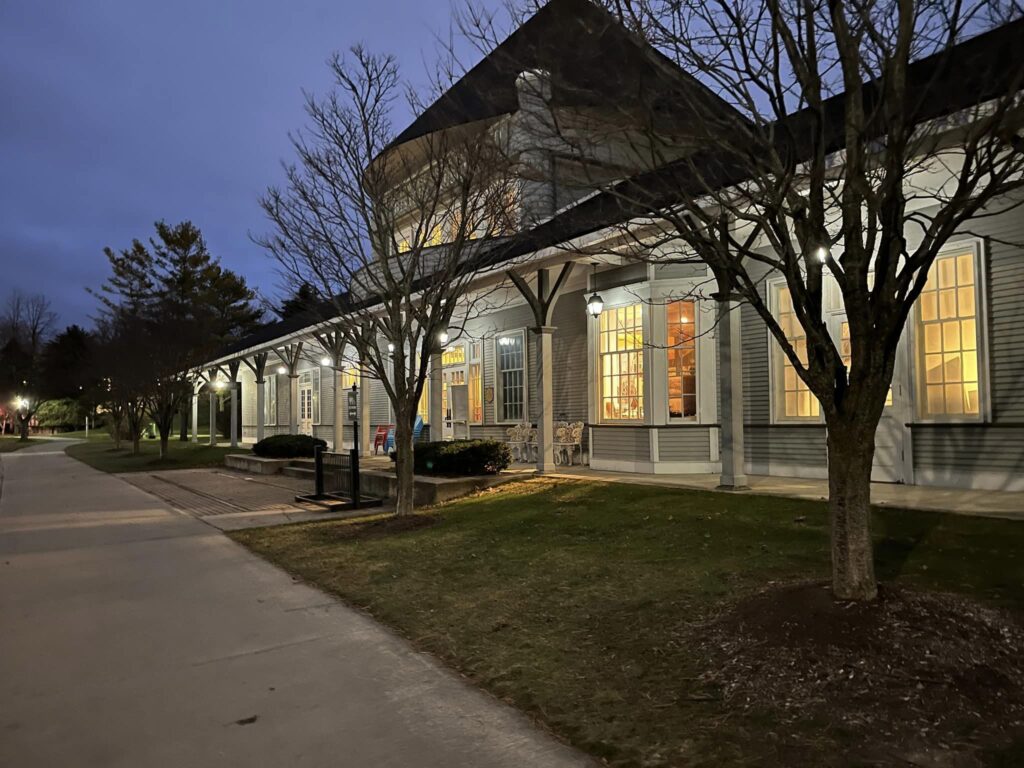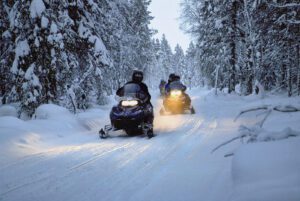
Saint Ignatius Catholic Church at Good Hart
Travel along the Tunnel of Trees in Northern Michigan and you will pass through Good Hart and see historic Saint Ignatius Catholic Church.
The Mackinac Bridge is the 10th largest suspension bridge (over water) in the world. It connects Michigan’s Upper and Lower Peninsula over the Straits of Mackinac, where Lake Michigan and Lake Huron meet. Mackinaw City is located at the southern point of the bridge, and St. Ignace at the northern point. I-75 is the highway that crosses the bridge. which starts from Sault Ste. Marie and ends north of Miami. The total length of the suspension bridge is 8,614 feet, with the total length of the bridge at five miles. Close to 500,000 vehicles cross the Mackinac Bridge during the summer. That number drops to around 169,000 in January. Annual vehicle crossing is approximately 4,000,000.
As far back as 1884, discussions were being held regarding the need for a bridge or tunnel between the Upper and Lower peninsulas. After the construction of the Brooklyn Bridge in 1883, interest grew for a suspension bridge of this type to span the Straits of Mackinac. The Board of Directors of the Grand Hotel on Mackinac Island reiterated the great need for a bridge to bring tourists to the island during the summer season.
Over the next 50 years, many ideas were presented, from a floating tunnel to a series of bridges and causeways from Cheboygan, around Bois Blanc and Round Islands, to Mackinac Island and finally St. Ignace.
Ferry service was started around 1923, but the traffic became so heavy that once again plans for a bridge were resurrected. In 1934, the Mackinac Straits Bridge Authority of Michigan was formed. During the next ten years, grants and loans were applied for, plans were drawn up, and a 4,200 foot causeway from St. Ignace was constructed. Then WWII began and all bridge progress came to a halt until 1947.
Finally in 1953, financing through a group of investment companies was the catalyst to finally begin the bridge project. Maintenance of the structure would be paid for from license plate and gasoline taxes. The great engineer Dr. David B. Steinman was hired for the design of the Mackinac Bridge and construction officially began in May of 1954.
After three years, the Mackinac Bridge was open to traffic on November 1, 1957. Total cost to build the bridge was $99,800,000. During construction five men lost their lives, and a monument in their honor was erected. In 1997, a bridge painter fell to his death, bringing the death toll to six.
Mackinac Bridge Authority
N. 415 I-75, St Ignace, MI, 49781
(906) 643-7600

Travel along the Tunnel of Trees in Northern Michigan and you will pass through Good Hart and see historic Saint Ignatius Catholic Church.

Within the historic Chicago/West Michigan railroad depot in Petoskey, the Little Traverse History Museum is a history filled gem.

This 28-mile scenic highway running between Atwood and Boyne Falls known as the Breezeway draws visitors because it is gorgeous.

Built during World War II to haul heavy materials during the winter, the Icebreaker Mackinaw was in service for 62 years then became a museum.

Travel along the Tunnel of Trees in Northern Michigan and you will pass through Good Hart and see historic Saint Ignatius Catholic Church.

With miles of scenic trails terrain and local snowmobile clubs, Northern Michigan is the place to bring the snow sleds in the winter.

Acres and acres of Northern Michigan are abloom with trillium during May, only adding to the beauty of spring Up North!

Little Traverse Conservancy protects land and scenic areas and provides opportunities for all of us to appreciate the environment.

Mackinaw City’s Heritage Village lets visitors explore life in the Straits of Mackinac as it was during the era of 1880-1917.